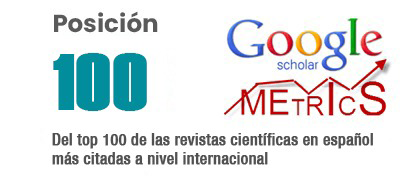Situational analysis of livestock activity in the parish of Palmales in the Canton of Arenillas
DOI:
https://doi.org/10.62452/bve9t651Keywords:
Cattle raising, rural, production, security, food, developmentAbstract
The objective of this research was to carry out a situational analysis of livestock activity in five sites in the parish of Palmales in the canton of Arenillas (Ecuador), with the purpose of contributing to generate strategies to improve productivity on the livestock farms of each producer and in the same way that they can benefit from all programs or advice from government entities that are an important factor for financial development and growth. Farms dedicated to specialized dual-purpose livestock production with record management, production systems, level of training, and formal livestock sales were characterized. An empirical methodology was followed, using the descriptive method in the field and the logical deductive method in the office, where the location of the research was located with its due coordinates and limitations. The questionnaire consisted of twelve questions such as the age of farmers, level of education, location of the herd, management, number of animals, marketing and financing problems, among others. In the results found 86% of the cattle ranchers have incomes below the unified basic salary, the cattle activity that 95% practice has an extensive production system, it is concluded that the cattle situation of the cattle producers have small farms dedicated to the extensive exploitation, where 57.1% have a number of animals included between (10 and 30) heads of specialized cattle for the double purpose production that are in the category of small producers.
Downloads
References
Banco Central del Ecuador. (2018). La economía ecuatoriana creció 14 en 2018. https://www.bce.fin.ec/index.php/boletines-de-prensa-archivo/item/1158-la-economia-ecuatoriana-crecio-14-en-2018
Belduma, R., & Barrezueta, S. (2018). Migración de agricultores del Cantón Chilla: un estudio de caso desde la preceptiva social y económica. Revista Científica Agroecosistemas, 6(3), 89-96
Beltrán, D., & Téllez, G. (2018). Estudio de percepción del clima organizacional de las empresas tecnificadas de ganadería de leche de la provincia del Tundama en el departamento de Boyacá. Revista de La Facultad de Medicina Veterinaria y de Zootecnia, 65(1).
Carrasco, R., Calvo, R., Rodríguez, L., & Masaquiza, D. (2017). Caracterización de fincas ganaderas vacunas para el trabajo de extensión rural en Ecuador. II. Clasificación. Revista de Producción Animal, 29(2).
Carrera, C., Bacci, M., & Rojas, L. (2019). Innovación en la cadena de suministro, desde la perspectiva del productor de carne bovina. Revista Espacios, 40(37).
Ecuador. Gobierno Autónomo Descentralizado Municipal de Arenillas. (2015). Plan de Desarrollo y Ordenamiento Territorial de la Parroquia Palmales (Cantón Arenillas). http://app.sni.gob.ec/sni-link/sni/PORTAL_SNI/data_sigad_plus/sigadplusdiagnostico/0760026570001_diagnostico_actualizado_27-10-2015_18-36-15.pdf
Ecuador. Instituto Nacional de Estadísticas y Censos. (2019a). Encuesta de Superficie y Producción Agropecuaria Continua 2018. INEC. https://www.ecuadorencifras.gob.ec/documentos/web-inec/Estadisticas_agropecuarias/espac/espac-2018/Presentacion de principales resultados.pdf
Ecuador. Instituto Nacional de Estadísticas y Censos. (2019b). Indice de precio al consumidor. INEC. http://www.ecuadorencifras.gob.ec/documentos/web-inec/Inflacion/2018/Enero-2018/01 ipc Presentacion_IPC_enero2018.pdf
Ecuador. Ministerio de Agricultura, Ganadería, Acuacultura y Pesca. (2015). El sector agropecuario ecuatoriano: análisis histórico y prospectiva a 2025. MAGAP. www.competencias.gob.ec/wp-content/uploads/2017/05/01PPP2016-POLITICA01.pdf
Granados, L., Valiente, J., Jáquez, J. A., Zurita, L., Rivera, P., & Hernandez, J. (2019). Caracterización y tipificación del sistema doble propósito en la ganadería bovina del Distrito de Desarrollo Rural 151, Tabasco, México. Acta Universitaria, 28(6), 47–57.
Larraín Prieto, R., Melo Contreras, Ó., Díaz Rojas, L. G., Riveros Fernández, J. L., & Fernández López, J. (2017). Estudio Prospectivo: Industria de la carne bovina y ovina chilena al 2030: principales desafíos tecnológicos para mejorar su competitividad. Fundación para la Innovación Agraria.
Mejía, S., Sánchez, D., Merino, A., Hernández, L. M., & Ávila, J. (2018). Diagnóstico de sistemas de producción de bovinos para carne en Tejupilco, Estado de México. Revista Mexicana de Ciencias Agrícolas, 9(2), 465–471.
Organización de las Naciones Unidas para Alimentación y la Agricultura. (2018). Producción animal. FAO. http://www.fao.org/animal-production/es/
Revista Líderes. (2015). En ocho provincias se concentra el mayor consumo de cárnicos. http://m.revistalideres.ec/articulo/lideres/consumo-carnicos-ecuador
Uribe, E. (2013). El cambio climático y sus efectos en la biodiversidad en América Latina. CEPAL, 51(3), 331–337.
Vite, H., & Vargas, O. (2018). Ganadería de precisión en la provincia de El Oro. Diagnóstico situacional. Espirales Revista Multidisciplinaria de Investigación, 2(17).
Downloads
Published
Issue
Section
License
Copyright (c) 2020 Mercedes Rocío Hidalgo Cumbicos, Oliverio Napoleón Vargas González, Harry Alexander Vite Cevallos (Autor/a)

This work is licensed under a Creative Commons Attribution-NonCommercial-ShareAlike 4.0 International License.
Authors who publish in Revista Metropolitana de Ciencias Aplicadas (REMCA), agree to the following terms:
1. Copyright
Authors retain unrestricted copyright to their work. Authors grant the journal the right of first publication. To this end, they assign the journal non-exclusive exploitation rights (reproduction, distribution, public communication, and transformation). Authors may enter into additional agreements for the non-exclusive distribution of the version of the work published in the journal, provided that acknowledgment of its initial publication in this journal is given.
© The authors.
2. License
The articles are published in the journal under the Creative Commons Attribution-NonCommercial-ShareAlike 4.0 International License (CC BY-NC-SA 4.0). The terms can be found at: https://creativecommons.org/licenses/by-nc-sa/4.0/deed.en
This license allows:
- Sharing: Copying and redistributing the material in any medium or format.
- Adapting: Remixing, transforming, and building upon the material.
Under the following terms:
- Attribution: You must give appropriate credit, provide a link to the license, and indicate if any changes were made. You may do this in any reasonable manner, but not in any way that suggests the licensor endorses or sponsors your use.
- NonCommercial: You may not use the material for commercial purposes.
- ShareAlike: If you remix, transform, or build upon the material, you must distribute your creation under the same license as the original work.
There are no additional restrictions. You may not apply legal terms or technological measures that legally restrict others from doing anything the license permits.




